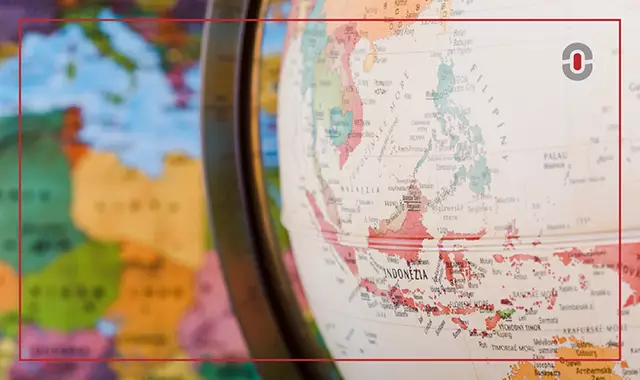AI Overview
| Category | Summary |
| Topic | Why businesses should treat Malay and Indonesian as separate localization targets, despite their shared roots. |
| Purpose | To educate content strategists, marketers, and localization teams on the pitfalls of assuming linguistic interchangeability between Bahasa Melayu and Bahasa Indonesia, and to provide best practices for adapting content to each market. |
| Key Insight | Bahasa Melayu and Bahasa Indonesia may appear similar but differ significantly in tone, vocabulary, formality, and cultural expectations—requiring separate localization strategies to avoid user alienation and ensure message clarity. |
| Best Use Case | Ideal for global brands planning to expand into both Malaysia and Indonesia, especially in sectors like e-commerce, education, and tech where localized UX, UI, and marketing content are critical. |
| Risk Warning | Reusing translations across both markets can result in misunderstandings, cultural insensitivity, and lower user engagement, which may hurt brand perception and even lead to regulatory issues. |
| Pro Tip | Maintain distinct style guides and glossaries for Malay and Indonesian. Involve native linguists for market-specific QA checks, and don’t hesitate to create dual versions of high-stakes content like campaigns or legal materials. |
For businesses expanding into Southeast Asia, it’s easy to assume that Bahasa Melayu (Malay) and Bahasa Indonesia (Indonesian) are interchangeable. After all, they look and sound strikingly similar to the untrained ear. Both languages stem from the same linguistic roots, and in many cases, share grammar structures and vocabulary. So, why not localize content just once and use it in both Malaysia and Indonesia?
That approach, while tempting, can lead to costly missteps.
Despite their common ancestry, the differences between Malay and Indonesian language have evolved along distinct cultural, historical, and linguistic paths. Understanding these differences isn’t just academic—it’s a business imperative. In this article, we’ll break down the key distinctions between Malay vs Indonesian language, why they matter for localization, and how to get your content right for each market.
Shared Roots, Separate Paths
Bahasa Melayu and Bahasa Indonesia both trace their origins to Classical Malay, once the lingua franca of maritime Southeast Asia. However, colonization played a pivotal role in shaping their divergence.
Malaysia, colonized by the British, adopted English as a strong linguistic influence, while Indonesia, under Dutch rule, incorporated Dutch vocabulary and administrative structures. As a result, the two languages grew apart—not just in vocabulary and spelling, but in style, tone, and cultural nuance.
Think of them not as identical twins, but as siblings who grew up in different households. Close enough to understand each other, but with distinct personalities and preferences.
Key Linguistic Differences Between Bahasa Melayu and Bahasa Indonesia
1. Vocabulary: Same Word, Different Meaning
One of the biggest pitfalls in Bahasa localization is assuming that shared words carry identical meanings. In many cases, they don’t.
- “Baja” means fertilizer in Malaysia, but steel in Indonesia.
- “Butuh”, a neutral word meaning need in Indonesian, sounds crude or even offensive in Malaysian contexts.
- “Kursus” means course in both languages, but might differ in nuance and use across industries.
These false friends can trip up localization efforts and embarrass brands if not handled carefully.
2. Spelling and Pronunciation
While both languages use the Latin script, spelling conventions often differ.
| English | Bahasa Melayu (Malaysia) | Bahasa Indonesia |
| Economy | Ekonomi | Ekonomi |
| Quality | Kualiti | Kualitas |
| Technology | Teknologi | Teknologi |
You’ll also notice subtle pronunciation differences and syllable stress variations that can affect voiceovers and read-aloud content.
3. Grammar and Syntax
Sentence construction can vary, too. For instance:
- Malay tends to use more auxiliary verbs (e.g., “akan,” “telah”), while Indonesian may opt for more streamlined syntax.
- Pronoun usage also differs. “Saya” is formal in both, but “aku” (informal “I”) is more common in Indonesian everyday speech.
4. Loanwords and Influences
Malaysia has absorbed more English loanwords due to its British legacy—especially in business, tech, and education. Meanwhile, Indonesian vocabulary reflects Dutch influence in words like kantor (office) and gratis (free).
Cultural and Contextual Differences
Localization isn’t just about the words—it’s about the world behind them. Here’s where cultural context plays a critical role:
Tone and Formality
Indonesian generally adopts a more casual tone, even in business contexts. In contrast, Malay often leans formal and polite, especially in written or professional settings.
A corporate email translated too informally into Malay may come off as unprofessional, while overly stiff Indonesian copy can sound cold or bureaucratic.
Cultural References and Expressions
Idioms, proverbs, and humor vary widely. An expression that resonates with an Indonesian audience might fall flat—or be misunderstood—in Malaysia. For example:
- An Indonesian might say: “Sudah jatuh tertimpa tangga” (literal translation: “Already fallen, then hit by a ladder.”) which means “adding insult to injury”.
- A Malaysian may use: “Sudah jatuh ditimpa tangga dan disimbah air panas” (literal translation: “Already fallen, then hit by a ladder and splashed with hot water.”) which means the same as the above but in a more dramatized version. It emphasizes that not only did things go wrong, they got even worse in an exaggerated, colorful way.
Religion and Tradition
Malaysia’s national identity is closely tied to Islam, influencing everything from advertising norms to dress codes in visuals. Indonesia, while also majority-Muslim, is officially secular and religiously diverse, with Hindu, Christian, and Buddhist populations shaping its cultural tone.
Localization tip: Converting words directly is inappropriate. You need to adapt the tone, references, and intent to fit local expectations, culture, and communication style. That means the local translator presence is obligatory.
Why It Matters for Localization
Using one-size-fits-all translations for Malaysia and Indonesia can backfire in several ways:

- Poorly localized content can confuse or alienate users.
What sounds natural in one country may feel awkward, foreign, or even offensive in the other—hurting user engagement and trust. - Treating Bahasa as one language may lead to mistranslations, brand tone mismatch, or user distrust.
Customers can instantly recognize when content isn’t written for them, which weakens your brand’s credibility and message clarity. - Legal/regulatory terminology differs (especially in finance, healthcare, or government).
Using the wrong term or phrase can not only cause misunderstandings but also create compliance issues or legal risk in local markets.
Real-world example:
A global e-commerce company repurposed its Indonesian website for Malaysia with minor tweaks. Malaysian users complained about confusing terminology and “foreign-sounding” tone. The result? A drop in engagement and a costly rewrite with native linguists.
Best Practices for Localizing into Bahasa Melayu and Bahasa Indonesia
To avoid these issues, follow these best practices:
- Always use native linguists for each language variant. They bring essential cultural insight and ensure the translation sounds authentic—not just grammatically correct.
- Avoid reusing one translation for both markets—treat them as distinct. Even slight differences in vocabulary, tone, or idioms can cause misunderstandings or dilute your message.
- Tailor tone and formality to the channel and audience (e.g., casual for social, formal for government or finance). A one-size-fits-all tone can come across as either too stiff or too informal, depending on the context and audience expectations.
- Keep glossaries and style guides for each variant. These resources ensure consistency across campaigns and teams, especially when managing multiple markets or vendors.
- Validate content with in-market users before launch. This final check helps catch subtle issues in cultural nuance, clarity, or emotional tone that may not be obvious during translation.
When to Use Neutral or Regional Bahasa (and When Not To)
There are situations where a “neutral” version of Bahasa can work—usually internal-facing documents like metadata tagging, training manuals, or technical specifications. In these cases, the goal is clarity and functionality, not emotional resonance or cultural relevance, so shared vocabulary and simplified structure may be sufficient. However, this approach only works when the content isn’t meant to build trust, convey brand identity, or comply with country-specific regulations.
But for customer-facing content, brand messaging, or legal documentation, neutrality is a risk. What sounds generic to one audience can feel impersonal—or even alien—to another, undermining your message and brand credibility.
Tip: Emotional tone, clarity, and cultural fit should always take priority over translation efficiency.
Conclusion
Bahasa Melayu and Bahasa Indonesia may look alike on the surface, but under the hood, they are unique languages shaped by different histories, cultures, and audiences. Treating them as identical in your Bahasa localization strategy can lead to miscommunication, brand damage, or missed opportunities.
For businesses targeting Malaysia and Indonesia, investing in proper localization isn’t just a checkbox—it’s how you earn trust and drive engagement.
Need help getting it right? 1-StopAsia specializes in Southeast Asian languages and can ensure your message truly resonates—whether in Kuala Lumpur or Jakarta.
